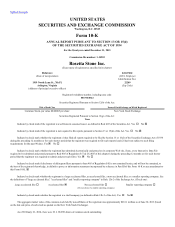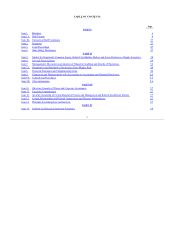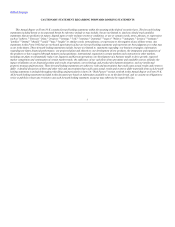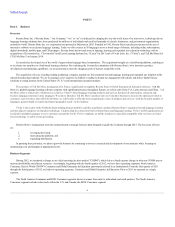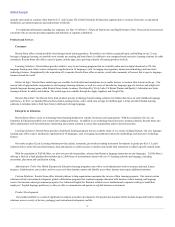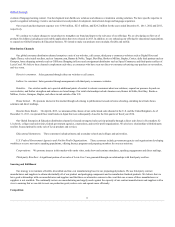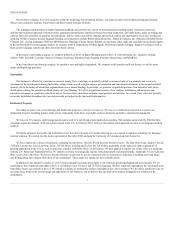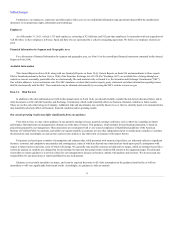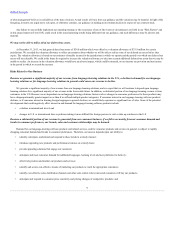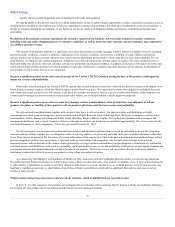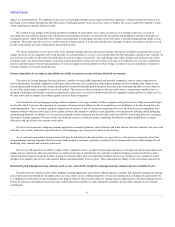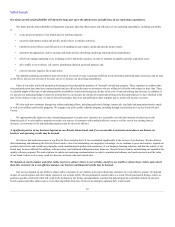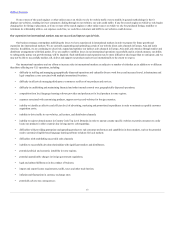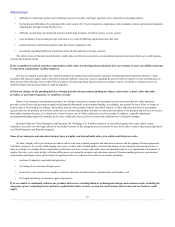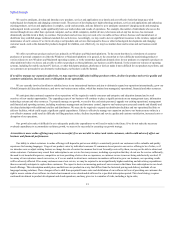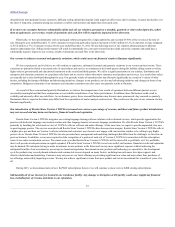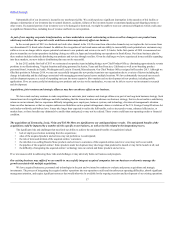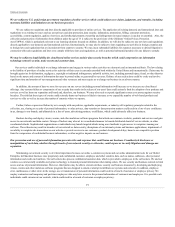Rosetta Stone 2013 Annual Report Download - page 10
Download and view the complete annual report
Please find page 10 of the 2013 Rosetta Stone annual report below. You can navigate through the pages in the report by either clicking on the pages listed below, or by using the keyword search tool below to find specific information within the annual report.
Table of Contents
of what management believes is realizable as of the date of release. Actual results will vary from our guidance and the variations may be material. In light of the
foregoing, investors are urged not to rely upon, or otherwise consider, our guidance in making an investment decision in respect of our common stock.
Any failure to successfully implement our operating strategy or the occurrence of any of the events or circumstances set forth in our "Risk Factors" and
in this annual report on Form 10-K could result in the actual operating results being different from our guidance, and such differences may be adverse and
material.
We may not be able to utilize all of our deferred tax assets.
At December 31, 2013, we had gross deferred tax assets of $36.0 million which was offset by a valuation allowance of $33.9 million for certain
jurisdictions. We recorded the valuation allowance to reflect uncertainties about whether we will be able to realize some of our deferred tax assets before they
expire. The valuation allowance is based on our estimates of taxable income for the jurisdictions in which we operate and the period over which our deferred tax
assets will be realizable. We could in the future be required to increase the valuation allowance to take into account additional deferred tax assets that we may be
unable to realize. An increase in the valuation allowance would have an adverse impact, which could be material, on our income tax provision and net income
in the period in which we record the increase.
Because we generate a significant majority of our revenue from language-learning solutions in the U.S., a decline in demand for our language-
learning solutions or for language-learning solutions in general could cause our revenue to decline.
We generate a significant majority of our revenue from our language-learning solutions, and we expect that we will continue to depend upon language-
learning solutions for a significant majority of our revenue in the foreseeable future. In addition, a substantial portion of our language-learning revenue is from
customers in the U.S. Because we are dependent on our language-learning solutions, factors such as changes in consumer preferences for these products may
have a disproportionately greater impact on us than if we offered multiple product categories. If consumer interest in our language-learning software products
declines, or if consumer interest in learning foreign languages in general declines, we would likely experience a significant loss of sales. Some of the potential
developments that could negatively affect interest in and demand for language-learning software products include:
•a decline in international travel; and
•changes in U.S. or international laws or policies making it more difficult for foreign persons to visit or take up residence in the U.S.
Because a substantial portion of our revenue is generated from our consumer business, if we fail to accurately forecast consumer demand and
trends in consumer preferences, our brands, sales and customer relationships may be harmed.
Demand for our language-learning software products and related services, and for consumer products and services in general, is subject to rapidly
changing consumer demand and trends in consumer preferences. Therefore, our success depends upon our ability to:
•identify, anticipate, understand and respond to these trends in a timely manner;
•introduce appealing new products and performance features on a timely basis;
•provide appealing solutions that engage our customers;
•anticipate and meet consumer demand for additional languages, learning levels and new platforms for delivery;
•effectively position and market our products and services;
•identify and secure cost-effective means of marketing our products to reach the appropriate consumers;
•identify cost-effective sales distribution channels and other sales outlets where interested consumers will buy our products;
•anticipate and respond to consumer price sensitivity and pricing changes of competitive products; and
9

